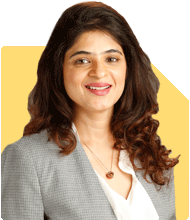PF Exposed Closed Company: How To Clear Background Verification?
Ashwini Dasgupta | Answer |Ask -Follow
Personality Development Expert, Career Coach - Answered on Dec 16, 2024
She has 15 years of experience training corporate professionals and has worked at Amazon, JP Morgan, Nomura and Satyam among others.
As a career coach, Ashwini specialises in helping growth-minded IT corporate managers develop their self-worth and create the right mindset so that they can achieve their career goals.
Besides corporate training, she offers personal consultations as well.
Ashwini holds a master’s degree in human resources from the Narsee Monjee Institute of Management Studies, Mumbai, and is a certified NLP trainer from the National Federation of NeuroLinguistic Programming, USA.
She has completed her soft skills training and image consultancy course from the Image Consulting Business Institute, Mumbai
Ashwini is also a PoSH trainer, certified by the Society for Human Resource Management.... more

Hello sir/ma'am, I am facing a challenging situation regarding my background verification process. My previous company, which I worked for, shut down in 2020. Unfortunately, I do not have an experience letter or full and final settlement letter from that company. Currently, I have been selected for a position in an MNC. However, the new company requires proof of experience and F&F letters from all previous employers. I did not include this company in my resume, but during the background verification process, it appeared on the PF portal. Since the previous company is now closed and unresponsive, I am unable to obtain any documents or verification. I am unsure how to address this situation with my new employer and proceed without jeopardizing my offer. Could you please guide me on the best approach to handle this issue?
Please provide all the documents you have related to the employer. For example- Appointment letters/ Salary slips and Bank Statements. This should help them. For verfication you may help them with any of the contact details of your managers you were reporting to. They can call them and get the verification done. I hoping this should help you resolve the issue on the verification front atleast. Secondly hiding the name of the employer you need to have a solid strong reason. Going forward please avoid hiding the details as every company today does background check. This may end up putting you at risk. For now please speak to them and help them understand the situation.
All the best.
Thanks
Ashwini
www.ashwinidasgupta.com
Thanks
Ashwini
www.ashwinidasgupta.com
You may like to see similar questions and answers below
Reetika Sharma |423 Answers |Ask -Follow
Financial Planner, MF and Insurance Expert - Answered on Oct 04, 2025
Dr Dipankar Dutta |1839 Answers |Ask -Follow
Tech Careers and Skill Development Expert - Answered on Dec 13, 2025
Dr Dipankar Dutta |1839 Answers |Ask -Follow
Tech Careers and Skill Development Expert - Answered on Dec 13, 2025
Mayank Chandel |2575 Answers |Ask -Follow
IIT-JEE, NEET-UG, SAT, CLAT, CA, CS Exam Expert - Answered on Dec 13, 2025
Radheshyam Zanwar |6742 Answers |Ask -Follow
MHT-CET, IIT-JEE, NEET-UG Expert - Answered on Dec 13, 2025
Mayank Chandel |2575 Answers |Ask -Follow
IIT-JEE, NEET-UG, SAT, CLAT, CA, CS Exam Expert - Answered on Dec 13, 2025
Mayank Chandel |2575 Answers |Ask -Follow
IIT-JEE, NEET-UG, SAT, CLAT, CA, CS Exam Expert - Answered on Dec 13, 2025
Kanchan Rai |646 Answers |Ask -Follow
Relationships Expert, Mind Coach - Answered on Dec 12, 2025
Ravi Mittal |677 Answers |Ask -Follow
Dating, Relationships Expert - Answered on Dec 12, 2025
Ramalingam Kalirajan |10881 Answers |Ask -Follow
Mutual Funds, Financial Planning Expert - Answered on Dec 12, 2025
Ramalingam Kalirajan |10881 Answers |Ask -Follow
Mutual Funds, Financial Planning Expert - Answered on Dec 12, 2025
























